There are quite a few plain-looking brown cup mushrooms in North America. They can be challenging to differentiate, but it gets easier once you know the main differences. But, even then, some are super complicated to tell apart without a microscope. This guide is meant as an introduction to these widespread, common fungi that frequently show up in ID requests. Sometimes, just saying it is a brown cup mushroom is as good as we’ll get!
None of these fungi are foraged for the table. Most aren’t poisonous, but they aren’t foraged because there’s not much to them, and they don’t taste like anything. Some are toxic, though, too. This guide covers some of the most common brown cup fungi.
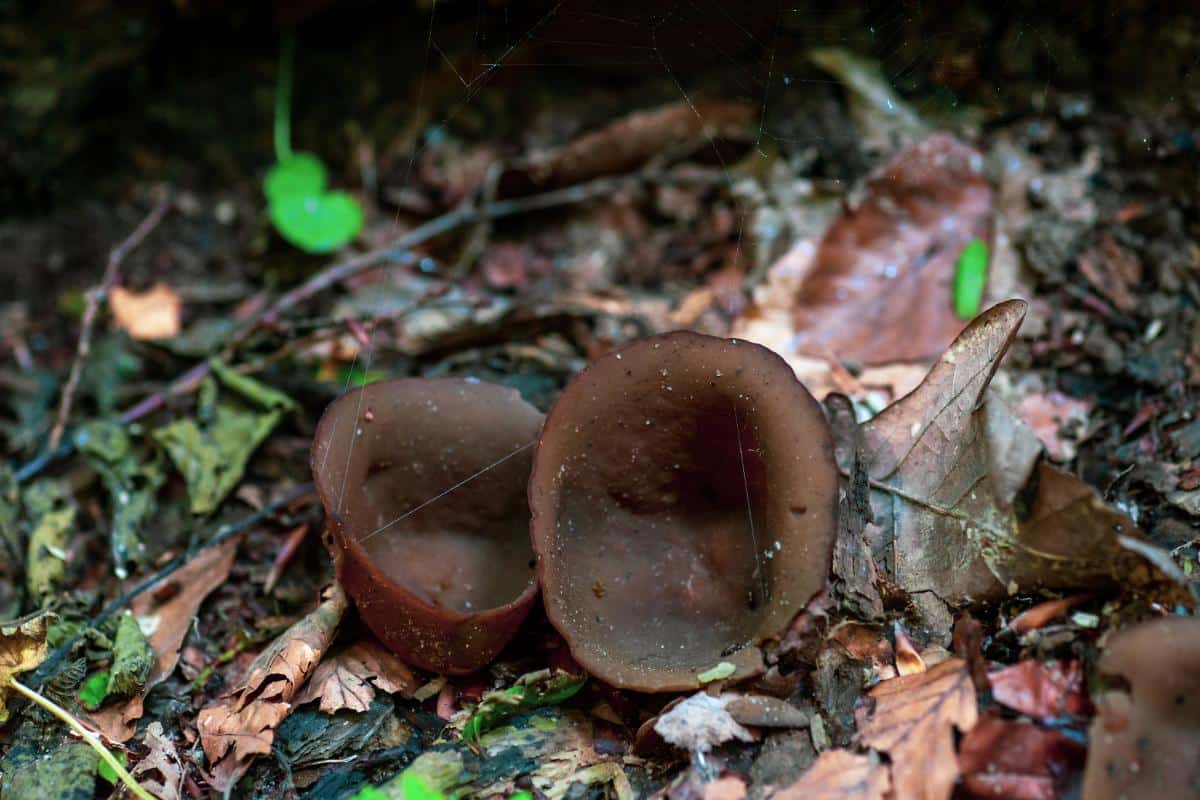
Jump to:
All About Brown Cup Mushrooms
Brown cup mushrooms are easily recognized for their familiar cup shape and thin brownish flesh. There isn’t much to them, and they are quite fragile. Identifying a brown cup species is simple in that you know it’s a brown cup mushroom, but beyond that, it can be challenging to determine which one exactly.
The Peziza Brown Cups: The True Cup Fungi
The species in the Peziza genus are the most cup-like and are the primary family of cup-shaped mushrooms. Peziza means “without a root or stem.”
Common Brown Cup Fungi (Peziza phyllogena, syn Peziza badiaconfusa)
This species is light tan to dark brown on the outer flesh, and the inner surface is dark purplish brown and reddish-gray. It grows up to 3 inches wide and is cup-shaped. It often has wavy or lobed edges. The common brown cup mushroom grows on decomposing organic material or decaying wood and appears in the spring.
Key features:
- Springtime fruiting
- Grows on decaying organic material (including wood and leaves)
- Grows up to 3” wide
- Light tan outer flesh
- Dark brown to reddish inner flesh
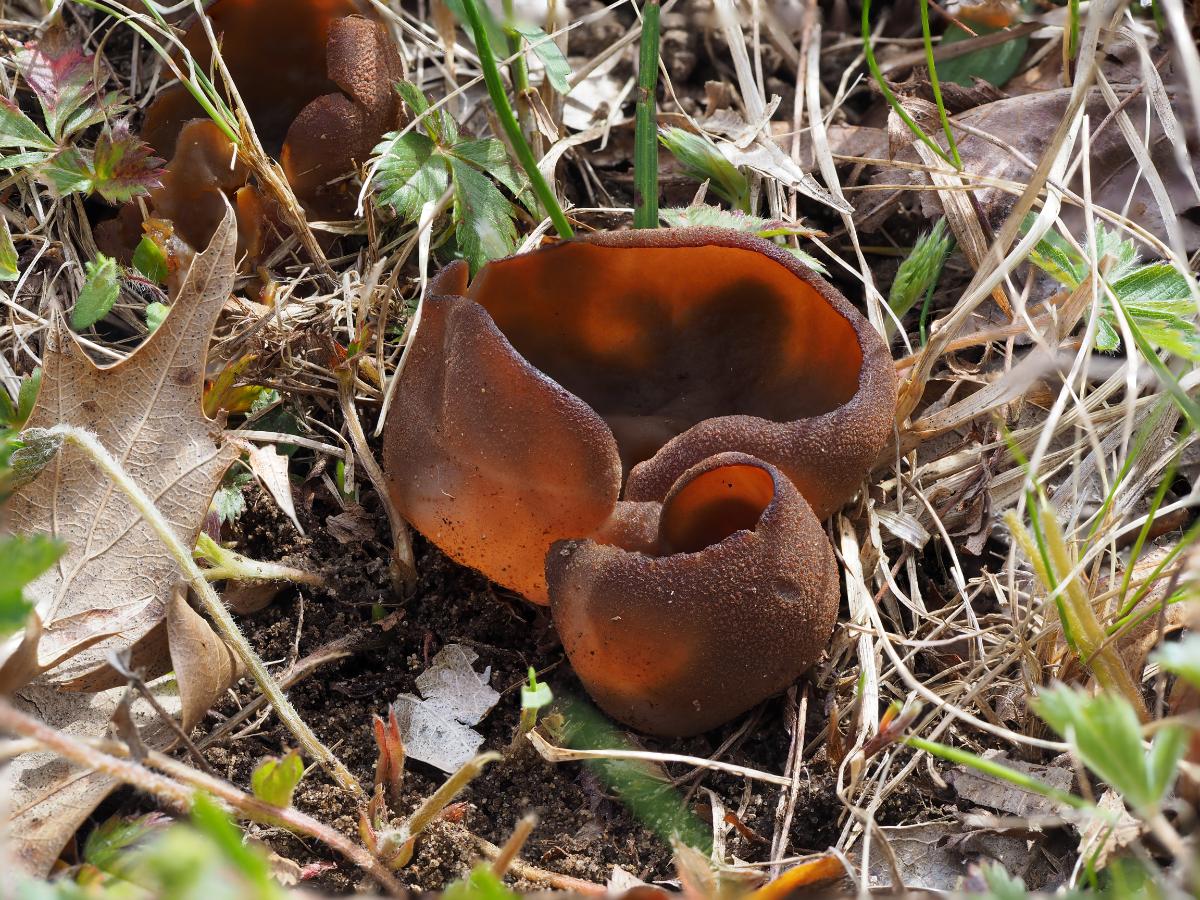
Bay Cup Fungus (Peziza badia)
There are reports of this mushroom in North America, but it is significantly less common than other brown cup fungi. This is primarily a European species. It is bay brown in color and appears most frequently on heavily compacted surfaces, like walking trails and gravel areas. The primary way to differentiate it from other cup fungi is that it appears in late summer to early fall.
Key features:
- Late summer to fall fruiting
- Grows on compacted surfaces but will also grow from organic material
- Grows up to 3” wide
- Brown cup – inner and outer skin
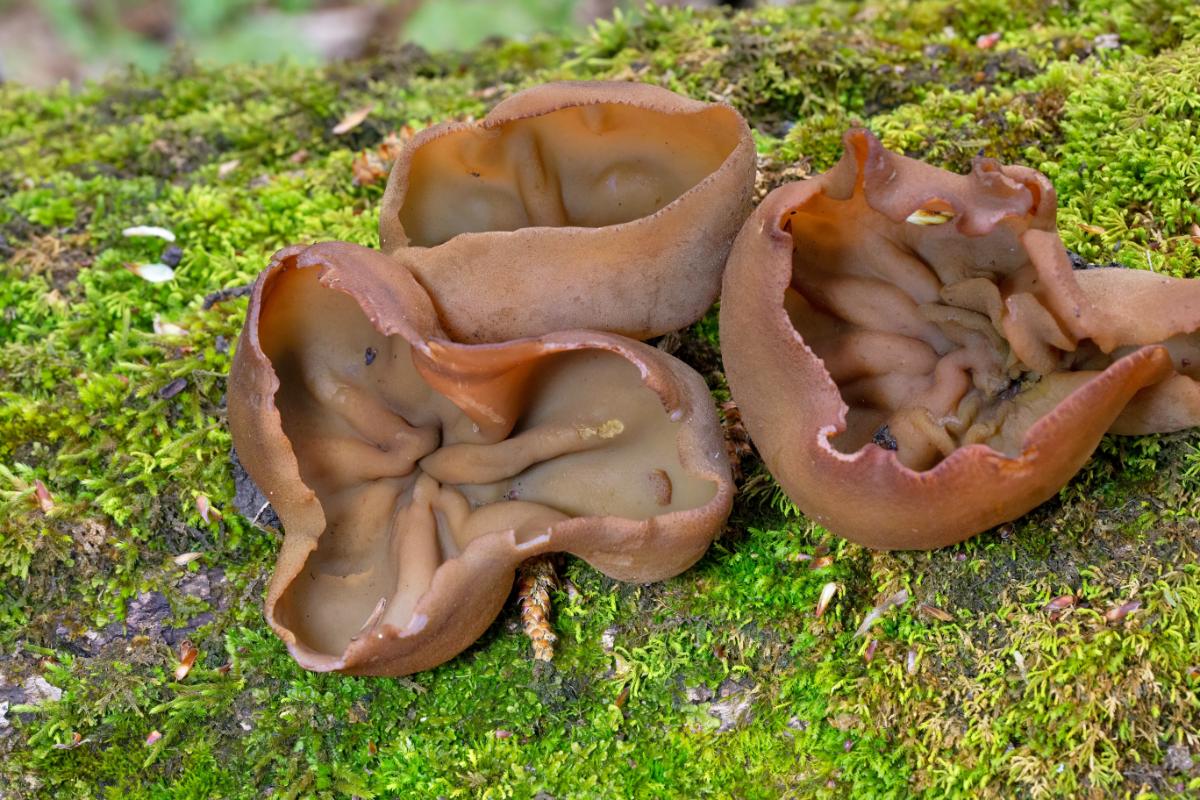
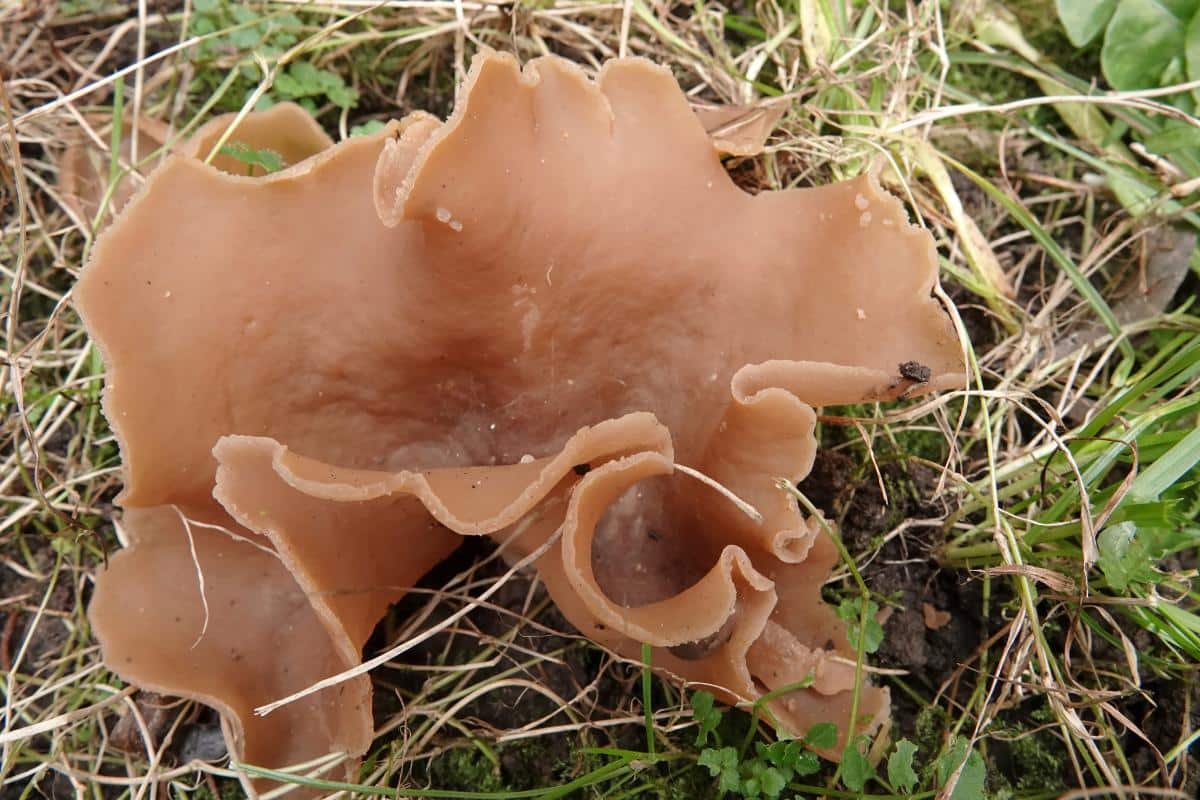
Spreading Brown Cup Fungus (Peziza varia)
While this brown cup mushroom looks like all the others, it differentiates itself a bit by growing on wood chips and mulch. It attaches to the wood from the center of the cup structure, which gives the inner cup a pinched or puckered appearance. This species usually grows on hardwoods either alone or in dense clusters. It prefers cool weather, so it is more likely to appear in spring or fall.
This brown cup fungus starts pale brown or even whitish and then may mature to darker brown, but it is never as dark as some of the other brown cup species. The outer surface is usually a bit fuzzy, while the inner cup is smooth. With age, it spreads out and loses much of its cup-like shape.
Key features:
- Spring or fall fruiting
- Grows on dead or decaying hardwood
- Reaches up to 5” wide
- Brown cup – brown inner skin, whitish and fuzzy outer skin
- With maturity, it spreads out, edges break, and loses cup shape
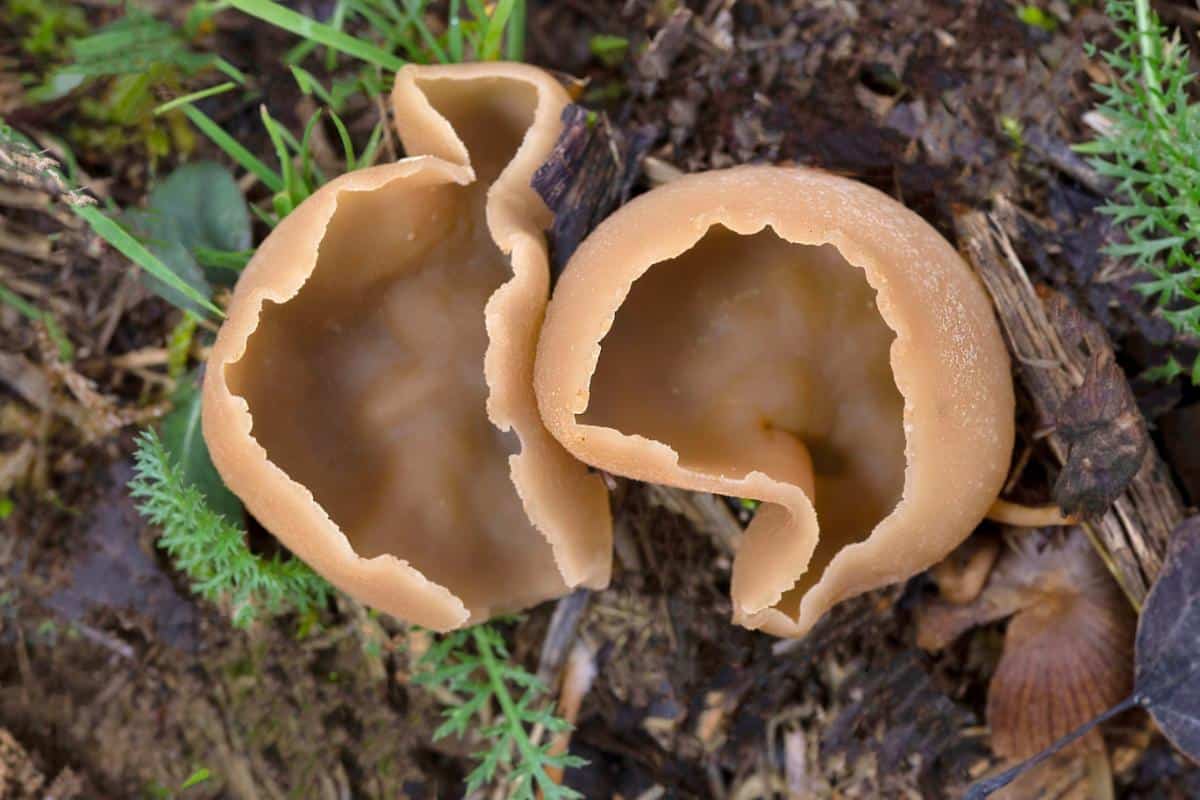
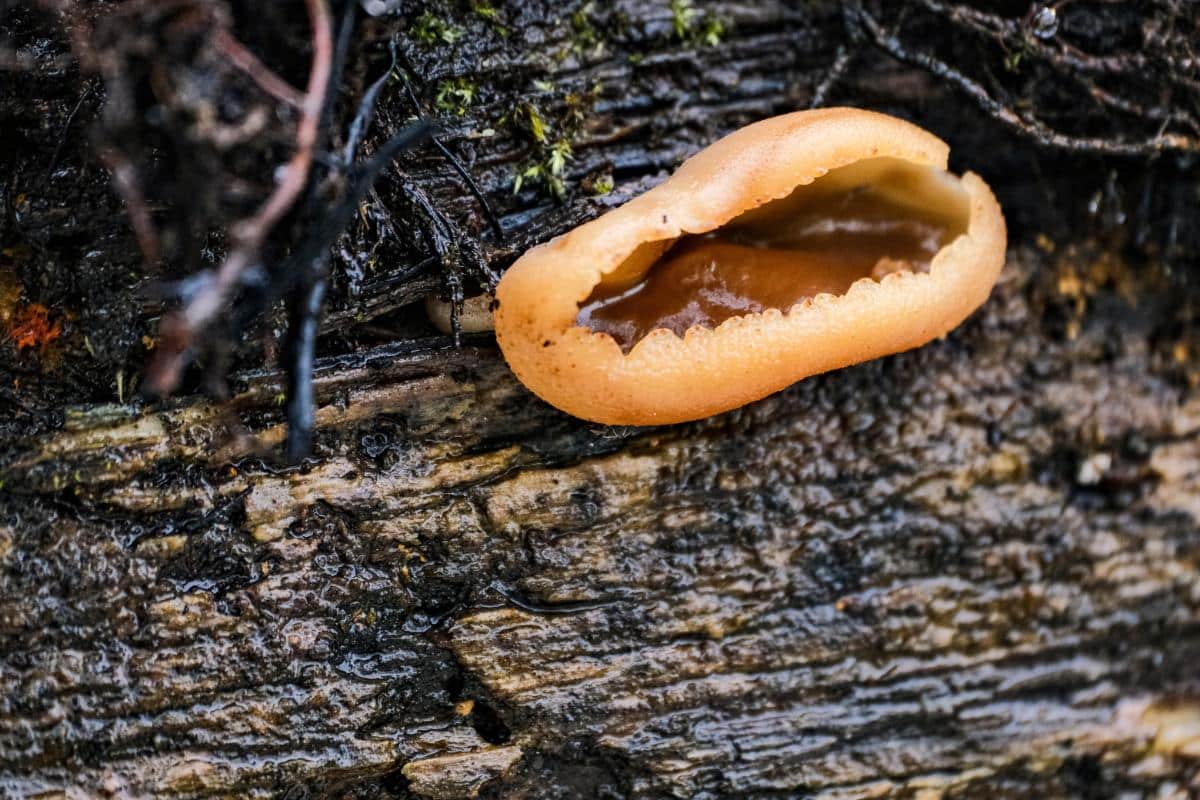
Domicile Cup Fungus (Peziza domiciliana)
If you’ve got a damp cellar or basement, you may have seen this brown cup fungus. It gets its common name because it shows up primarily in human habitats. The domicile cup mushroom grows on rotten wood, old drywall and plaster, cellars, caves, and in damp basements. If the conditions are right, it will grow on walls, floors, and ceilings.
The domicile cup fungus starts out cup-shaped but loses its shape with age and becomes flat. The outer surface is whitish, while the inner surface starts out white and then turns tan and dark brown. There is a very small white stem. This species grows up to 4″ wide.
The opportunistic and resilient domicile cup mushroom grows all over the world, from the Himalayas to Antarctica.
Key features:
- Grows on rotted wood, plaster, walls, ceilings, and wet basements, and cellars
- Grows up to 4” wide
- Brown cup – pale brown to dark brown inside, whitish to pale brown outer skin
- Very short whitish stem
- With age, it flattens out and often loses its cup shape
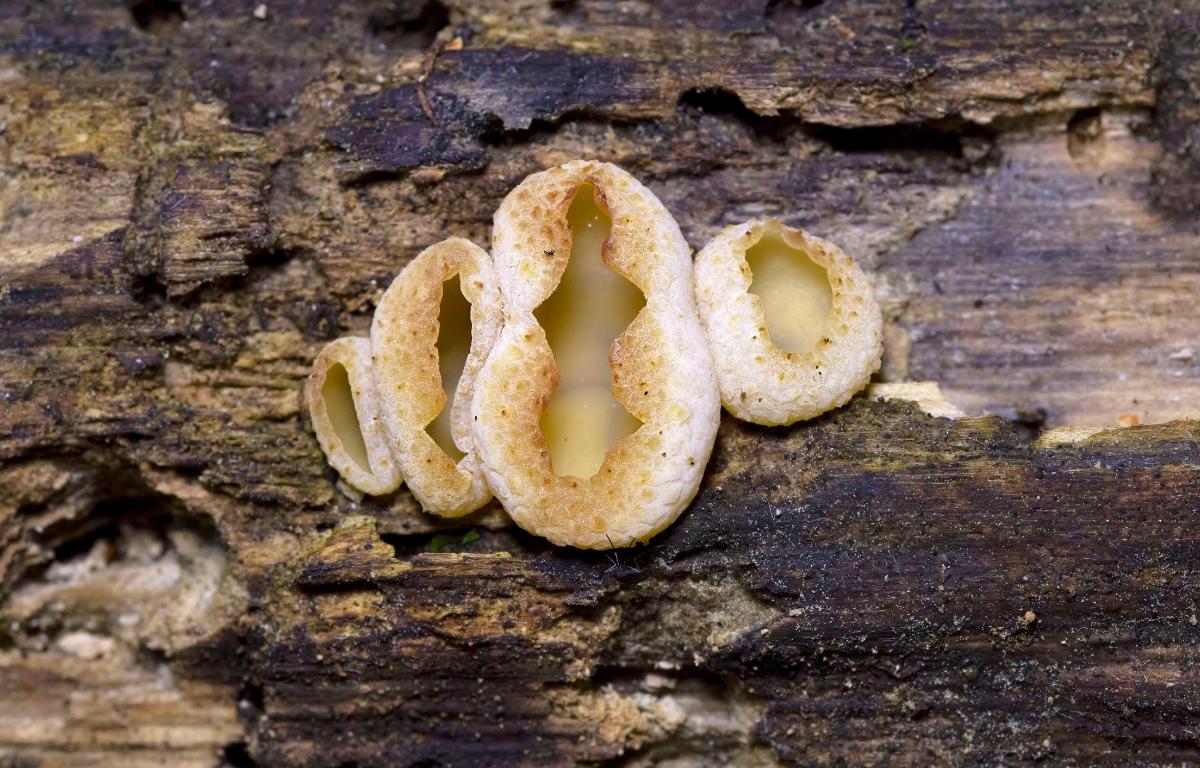
Common Dung Cup (Peziza vesiculosa)
As you may have guessed, the common dung cup grows on animal manure and compost. This mushroom seems to especially like horse manure and is common in pastures and around horse stables. It is a small brown cup mushroom, averaging up to 2.5 inches wide. The other surface is light brown to whitish, while the inner surface is yellowish-brown to just brown. It fruits in the cooler months of fall, winter, and spring.
Key features:
- Grows on manure or compost, especially horse manure
- Smallish, only reaching 2.5 inches wide
- Brown cup – pale brown to whitish on the outside, yellow-brown to medium brown inside.
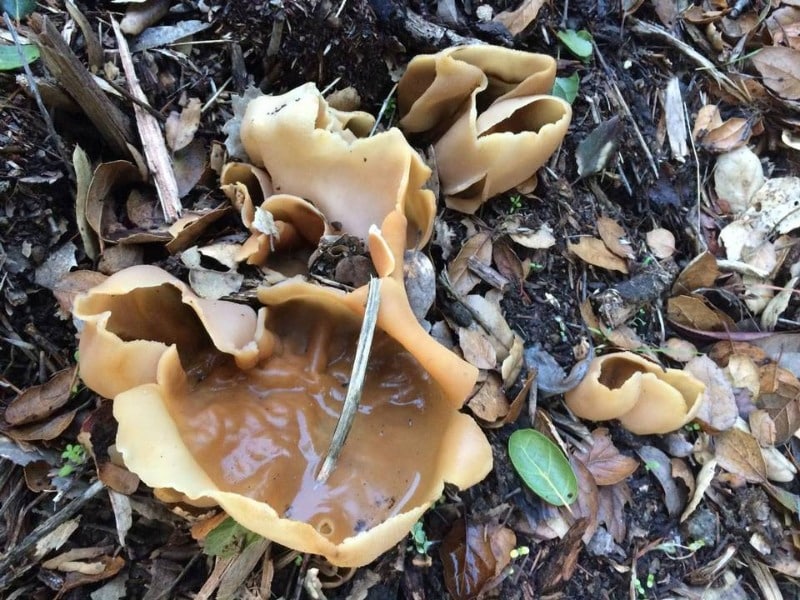
Boring Brown Cup Fungus (Peziza arvernensis)
Yes, that’s really its common name! That gives you a bit of a clue about this species. This brown cup mushroom species is not very remarkable, making it easy to confuse with other species without microscopic analysis. Its flesh is brownish on the inside and outside, and it is smooth all around. Sometimes, it becomes just slightly wrinkled.
When young, this mushroom is cup-shaped, but with age, it may flatten out almost entirely. If there are a lot clustered together, they will grow irregularly and have waved or lobed edges. And, they do commonly grow in small clustered groups. The cups reach up to 3.50 inches wide.
This species is more of a European one, but there are reports of it in North America.
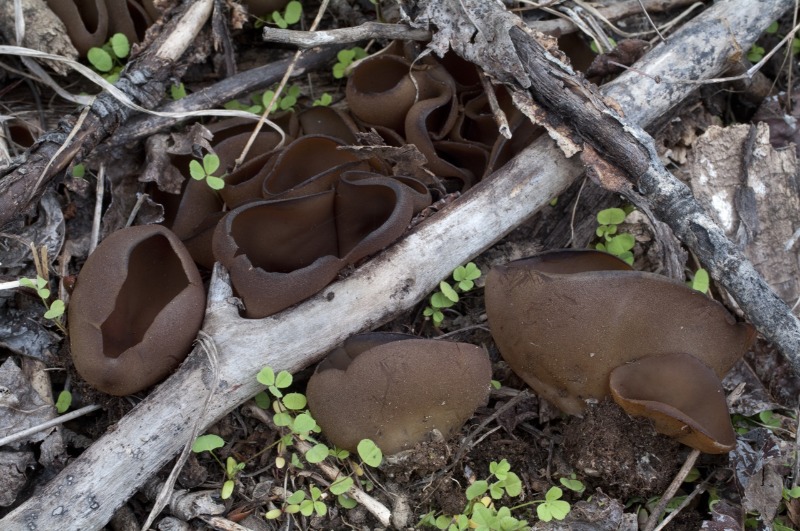
The Discina Brown Cups
These fungi are in the same order as morels. They’re very closely related, even though they look pretty different. There are similarities, though, that stand out – the thinness, fragileness of the flesh, the lack of gills, and the way the fruiting bodies are melded together – there are no separate gills, stems, or cap-like with other fungi species.
Bleach Cup (Disciotis venosa)
Also known as veiny cup and cup morel, this brown cup fungus species grows widely across North America. It looks like a cup when it first fruits, but then develops several obvious trademarks that set it apart from others. The outer surface of the cup is whitish to light tan, while the inner surface is brown. And the interior surface has prominent veins – it is not smooth.
It grows quite large for a cup fungus, reaching up to 8″ across. It also has a short stem. As it grows, the cup opens up and flattens out, losing its cup-like appearance entirely. When mature, the mushroom lies splayed out and flat on the ground, looking more like a disc than a cup. It fruits in early spring, but you can often find it much later because the fruiting bodies can last up to 12 weeks. When the flesh is broken, it smells reminiscent of bleach.
Key features:
- Cup-shaped only in youth, it flattens out completely with age
- Inner surface is veined
- Lighter colored outer surface
- Has a short stem
- Grows up to 8” wide
- Broken flesh smells bleach-like
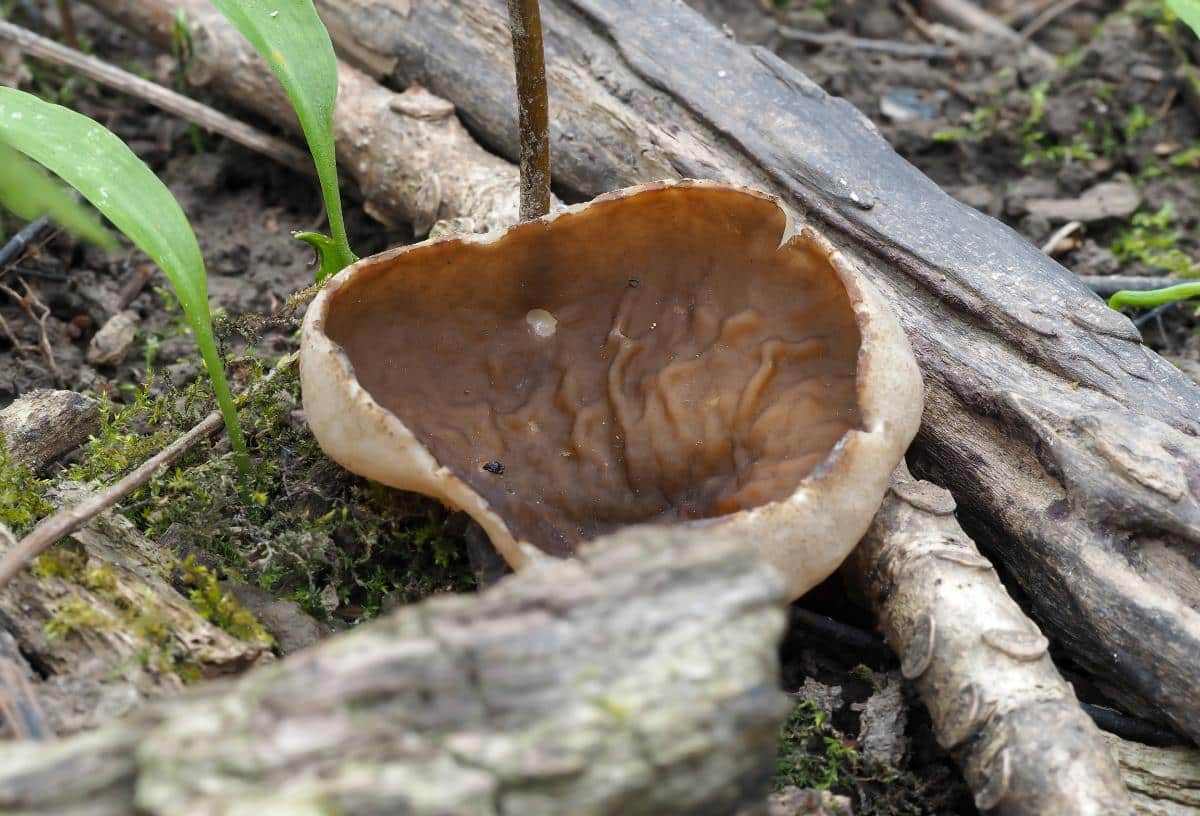
Pig’s Ears (Discina ancilis, syn Discina perlata, Gyromitra perlata)
The primary features of this species that set it apart from others are its wrinkled brown inner cup flesh and whitish exterior flesh color. It might be cup-shaped or ear-shaped with edges that turn downward and might have a short brownish stem. The cups reach up to 4″ wide and are usually more disc-like than true cup-shaped.
It is not as veined as the bleach cup (described above)—it’s more wrinkly or crumbled-looking than vein-like. This species fruits in late spring to early summer and grows on decomposing organic material or rotting wood in coniferous-prominent areas.
Key features:
- Wrinkled or lobed appearance
- Not always cup-shaped, may be flattened
- Cup edges turn downward
- Whitish exterior flesh
- Short brown stem (not always)
- Grows in coniferous-rich areas
- Fruits spring into summer
- Grows up to 4” wide
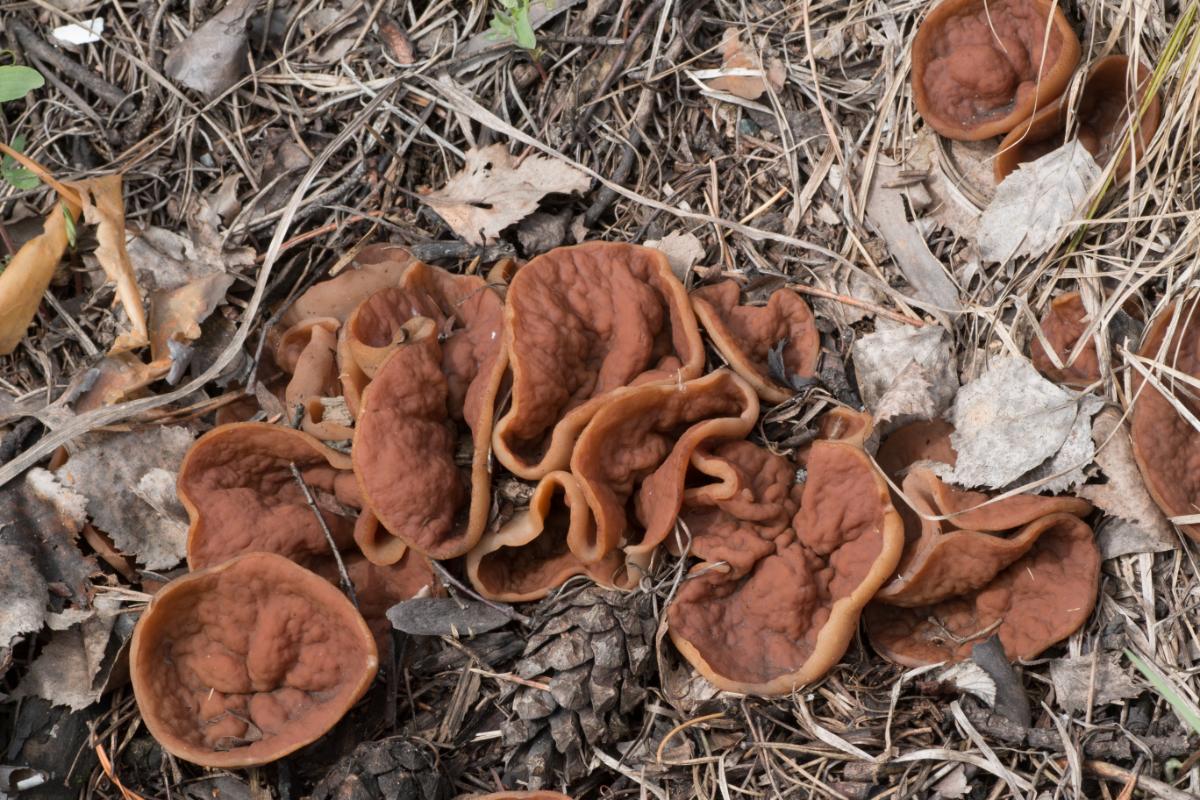
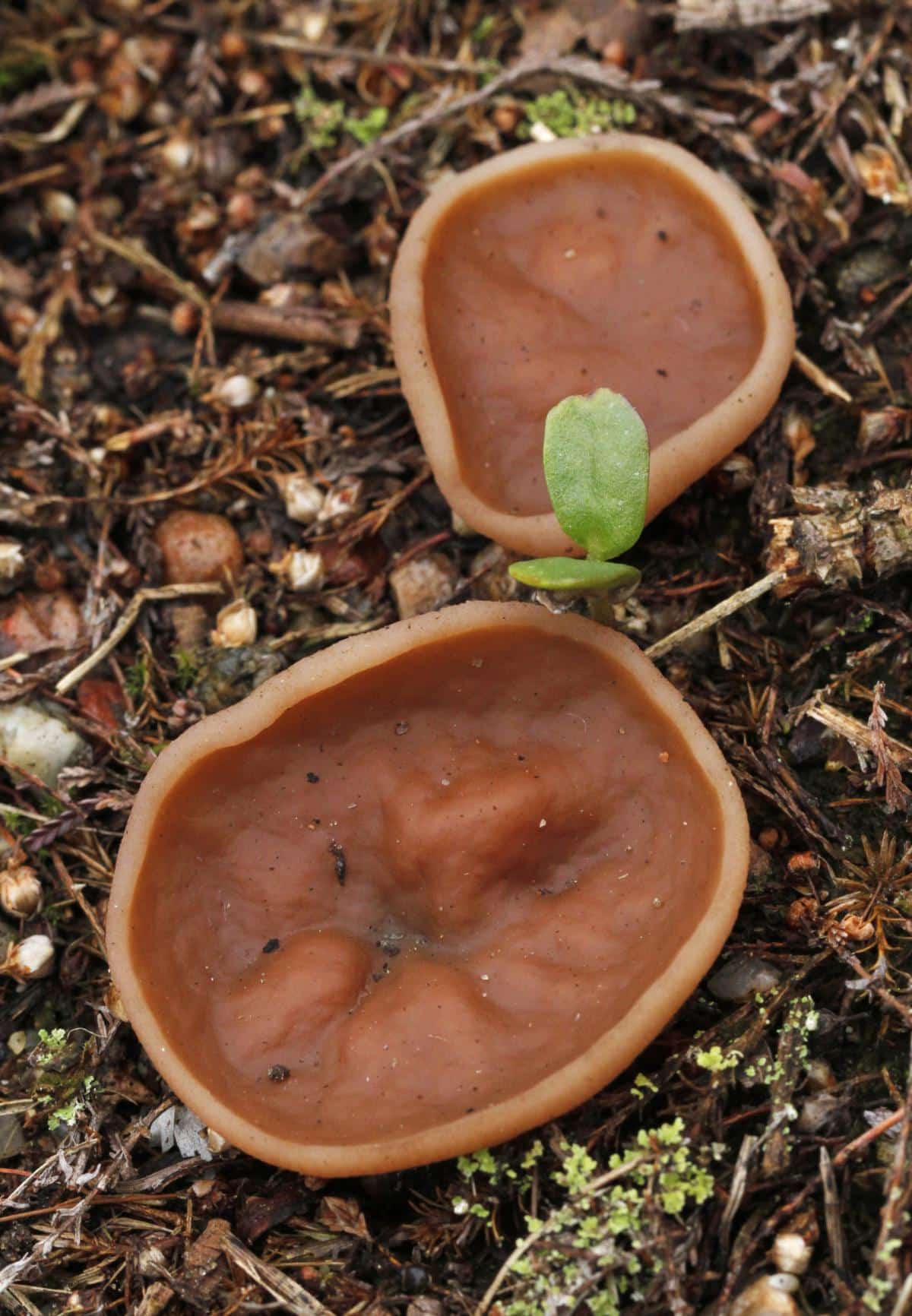
The Gyromitra Brown Cups
The Gyromitras are also closely related to morels. And the Dicena fungi. In fact, they’re all in the same order of fungi, breaking out into separate families. Like morels and Dicena species, the Gyromitra species have thin, fragile flesh and bodies and no gills. However, even though their flesh is thin, it is still usually significantly thicker and more robust than the Peziza species.
Gyromitra leucoxantha
This brown cup fungus is yellowish-brown or orange-brown on the inside and creamy white to tan on the outside. It has a small stem that is also creamy white. When young, the mushroom is cup-shaped, but it flattens out to look like a brown, lumpy pancake with age. It grows between 1.5-4 inches wide and fruits from the ground. It usually appears near decomposing material or stumps.
G.leucoxantha is a springtime species, like morels, and fruits in mixed forests in the northern and montane states. The yellowish to orange-brown brown inside is usually what separates this one from lookalikes, but it isn’t always that yellow and requires microscopic analysis to differentiate it.
Key features:
- Yellowish-brown inner cap
- Whitish outer cap
- Short whitish stem
- Flattens with age
- Appears in spring
- Grows up to 4 inches wide
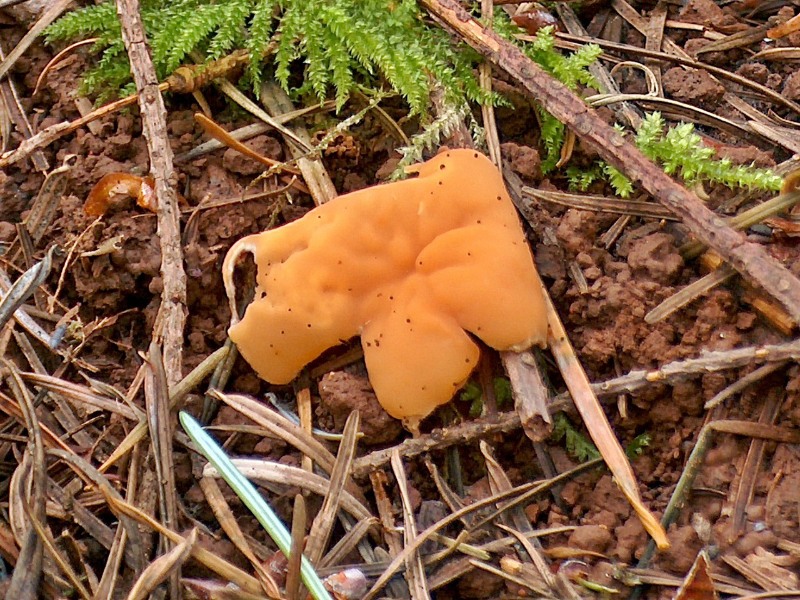
Helvella Brown Cups
In general, Helvella species have distinctive stems. So, even if they look cup-shaped from above, they’re usually more chalice-shaped—like a wine glass with a long, slender stem. However, from above, they look very much like a common brown cup.
Cabbage Leaf Helvella aka Vinegar Cup aka Brown Ribbed Elfin Cup (Helvella acetabulum)
This brownish cup fungi is related to the Pezizas but is large and quite different from them. It is tan to pale brown and features prominent ribs on the outside skin that look a lot like the ribs on a cabbage leaf. This species has a deep cup shape that remains that way—it doesn’t flatten out like so many other brown cup mushrooms.
The cabbage leaf helvella also has a distinctive whitish stem that can grow up to 2.5 inches tall. The mushroom grows to 3 in diameter overall. Some consider this species poisonous because it contains MMH, the same toxin found in false morels. However, this can be removed by boiling and utilizing the same process you would to make toxic Gyromitra species edible.
Key Features:
- Outer cup has prominent ribs or veins like a cabbage leaf
- Tan to pale brown, darker on the inside
- White stem
- Grows with hardwoods and conifers
- Appears in spring and summer
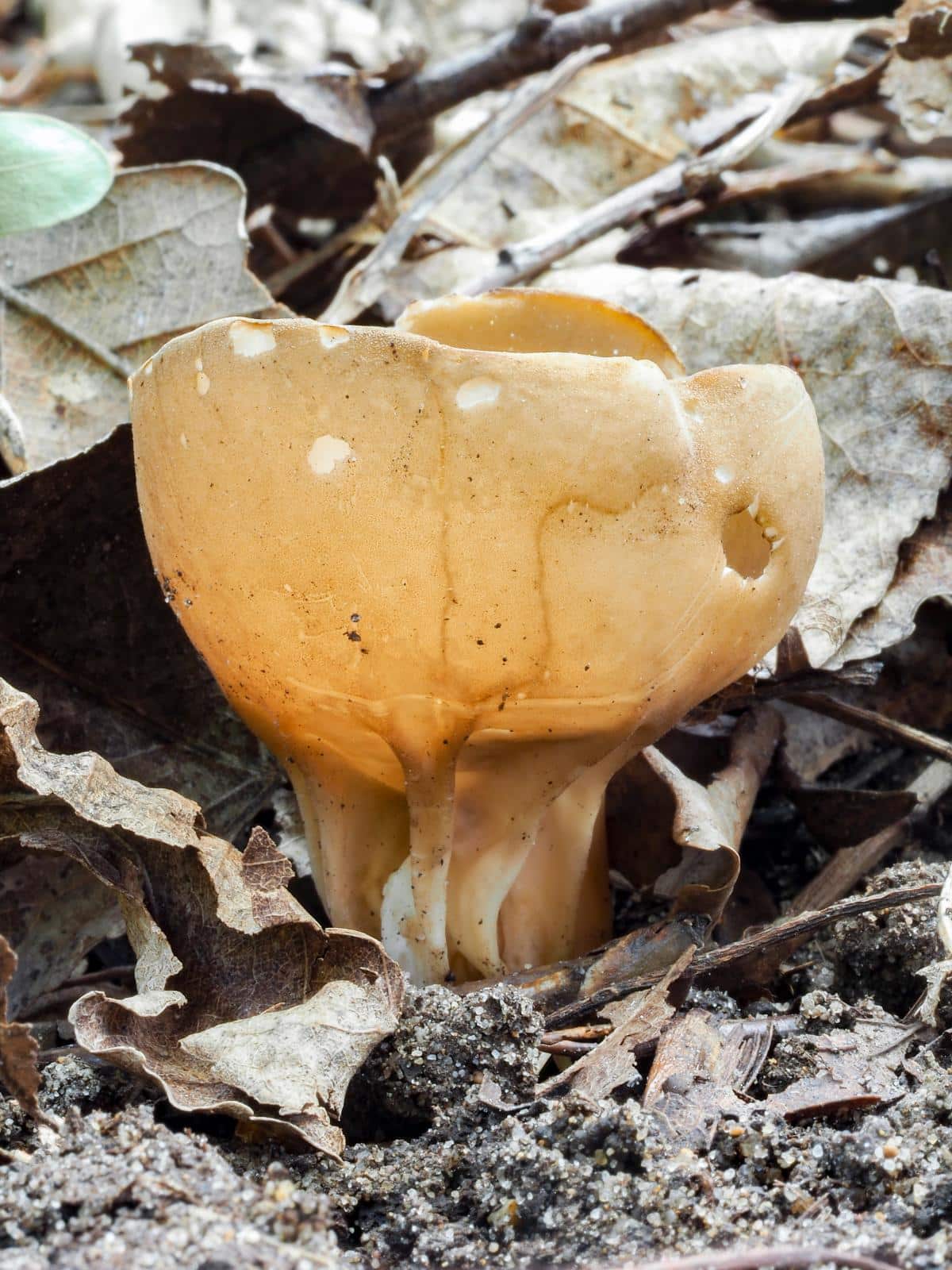
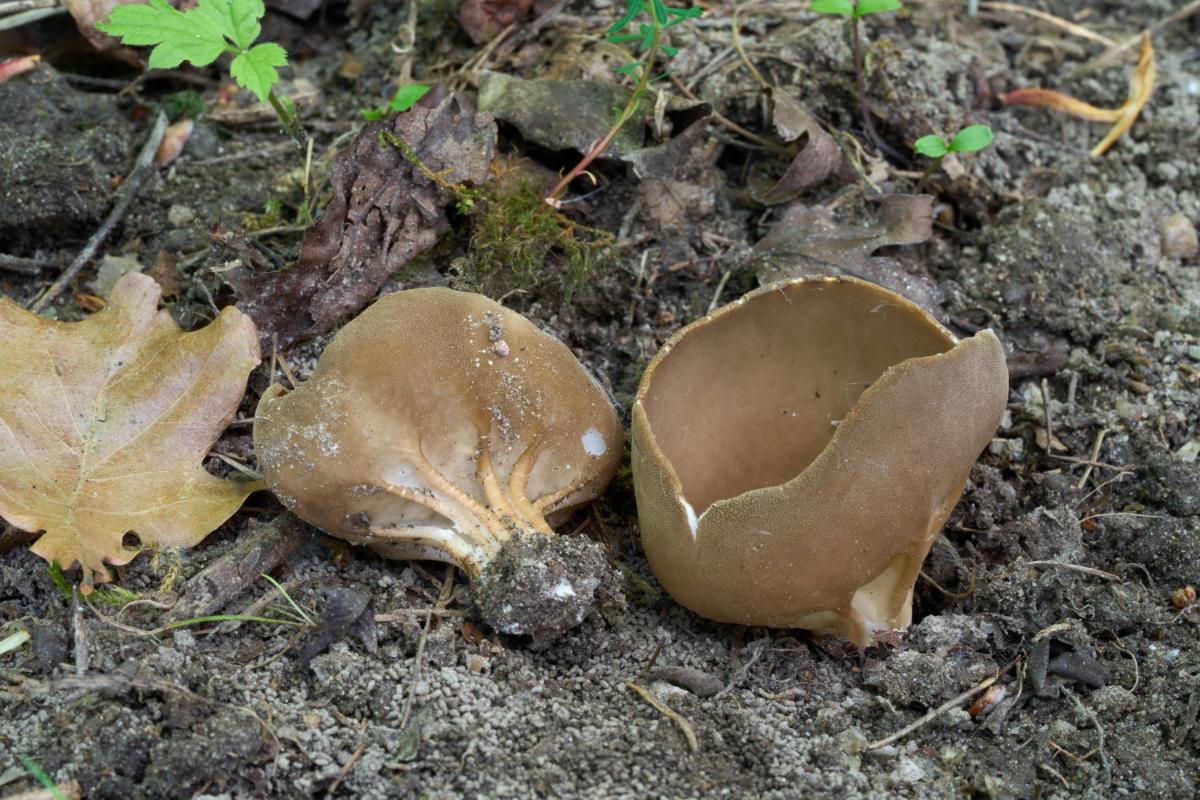
This guide only cover some of the top, most common species of brown cup fungi in North America. Don’t be surprised if you find others that don’t match this list. Often, the best you can do is narrow down the genus. Or, get out the microscope. With this guide, though, you can at least figure out the main differences so you can put the mushroom in the proper genus.
Common Questions About Brown Cup Mushrooms
Is the brown cup mushroom edible?
It depends on the species. There are many brown cup fungi; to determine edibility, you need to figure out the species. Most brown cup mushrooms are technically edible but not worth it because they’re so little to them. Some are also toxic.






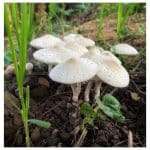
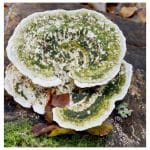
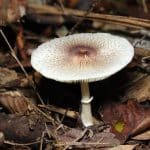
amy says
What does it mean when these are growing in the mulch bed of newly planted trees (planted one month ago)?
Jenny says
It means the mushroom spores came in with the soil or new mulch. They aren’t dangerous to the trees or you and contribute to the overall ecosystem. The soil is healthy and they like it 🙂